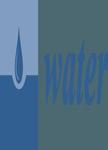版权所有:内蒙古大学图书馆 技术提供:维普资讯• 智图
内蒙古自治区呼和浩特市赛罕区大学西街235号 邮编: 010021

作者机构:Tech Univ Darmstadt Chair Engn Hydrol & Water Management D-64287 Darmstadt Germany
出 版 物:《WATER》 (Water)
年 卷 期:2020年第12卷第6期
页 面:1740页
核心收录:
基 金:This research received no external funding. The authors would like to thank the HLNUG RP Darmstadt and the Wasserverband Gersprenzgebiet for making data available and allowing installation of equipment for the monitoring campaigns
主 题:German low mountain range baseflow separation mass balance filtering recession analysis recursive digital filters
摘 要:The last several years in southern Germany brought below average precipitation and high temperatures, leading to considerable challenges in water resource management. Deriving a plausible baseflow estimate is important as it affects aspects of integrated water resource management such as water usage and low flow predictions. The aim of this study is to estimate baseflow in a representative catchment in the German low mountain range and identify suitable baseflow estimation methods for this region. Several different baseflow separation methods, including digital filters, a mass balance filter (MBF) and non-continuous estimation methods were applied and compared to estimate baseflow. Using electric conductivity (EC) for the MBF, June to September and November to May were found to be suitable to estimate the EC of the baseflow and runoff component, respectively. Both weekly and continuous EC monitoring can derive similar EC value component estimates. However, EC estimation of the runoff component requires more careful consideration. The baseflow index (BFI) is estimated to be in the range of 0.4 to 0.5. The Chapman and Maxwell filter, Kille method and the Q90/Q50 ratio are recommended for baseflow estimation in the German low mountain range as they give similar results to the MBF. The Eckhardt filter requires further calibration before application.